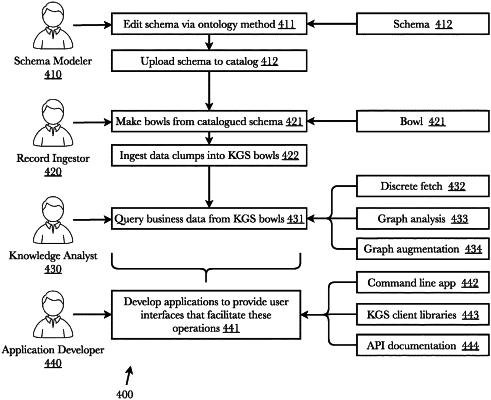| CPC G06F 16/9024 (2019.01) [G06F 16/2272 (2019.01); G06F 16/2458 (2019.01); G06F 16/284 (2019.01); G06F 18/29 (2023.01); G06N 5/02 (2013.01)] | 19 Claims |

|
1. A system for cybersecurity analysis utilizing high-performance, dynamically-specifiable, knowledge graph-based information storage and utilization, comprising:
a computing device comprising a processor and a memory;
an in-memory associative array comprising key-value pairs stored in the memory of the computing device and configured to represent a knowledge graph;
an integration platform comprising a first plurality of programming instructions stored in the memory of, and operating on the processor of, the computing device, wherein the first plurality of programming instructions, when operating on the processor, cause the computing device to:
compile a received schema into data types, each data type comprising an entity definition, one or more link definitions, and one or more attribute definitions;
receive one or more data clumps, each data clump comprising entity, link, and attribute data;
for each received data clump, determine whether the respective data clump complies with the schema;
send each compliant data clump to the knowledge graph engine for assembly into a new knowledge graph that is fully compliant with the schema; and
the knowledge graph engine comprising a second plurality of programming instructions stored in the memory of, and operating on the processor of, the computing device, wherein the second plurality of programming instructions, when operating on the processor, cause the computing device to:
instantiate the knowledge graph in the in-memory associative array;
receive data clumps from the integration platform wherein the data clumps are known to be fully compliant with the schema; and
populate the knowledge graph in the in-memory associative array with the entity, link, and attribute data in each fully-compliant data clump to generate a new fully-compliant knowledge graph.
|